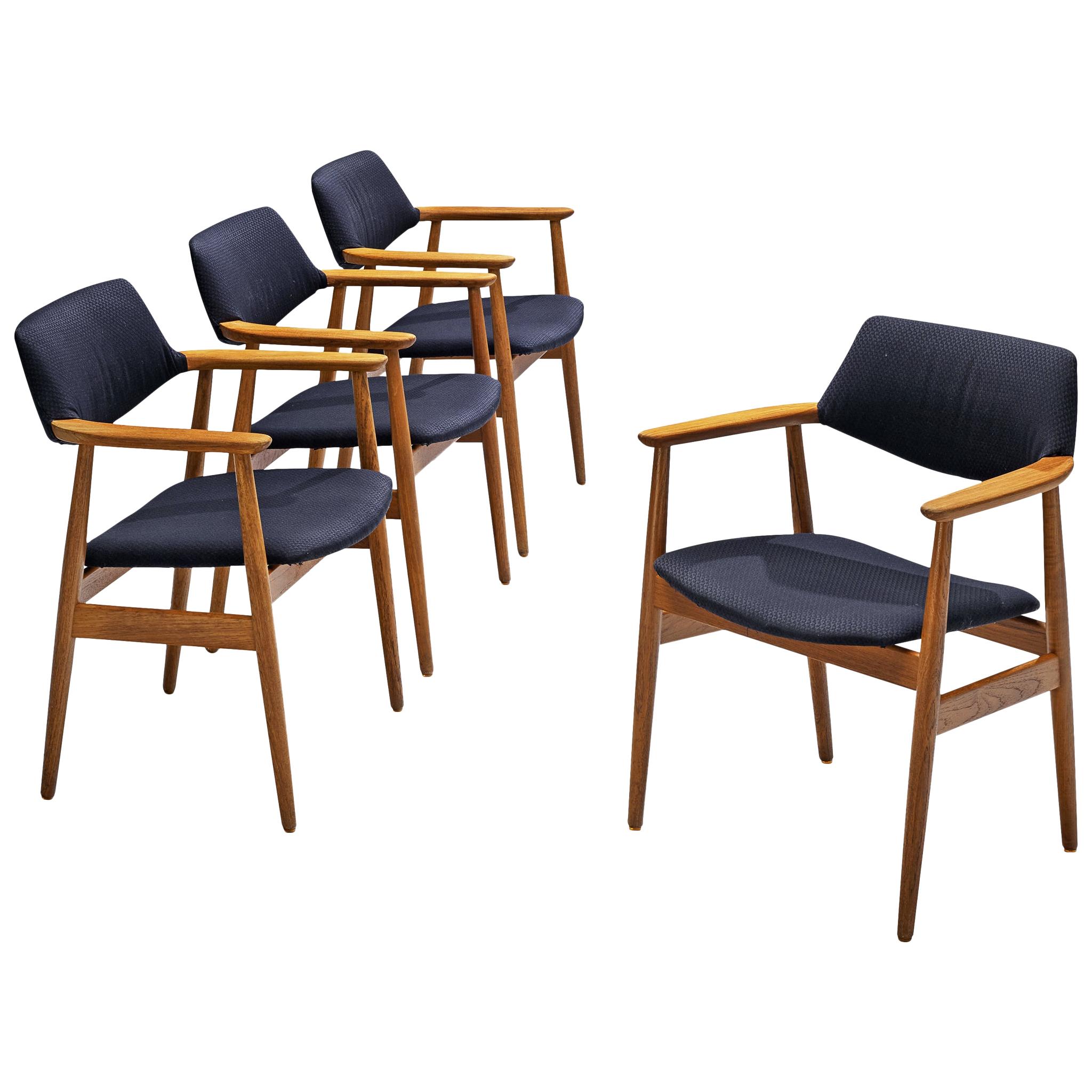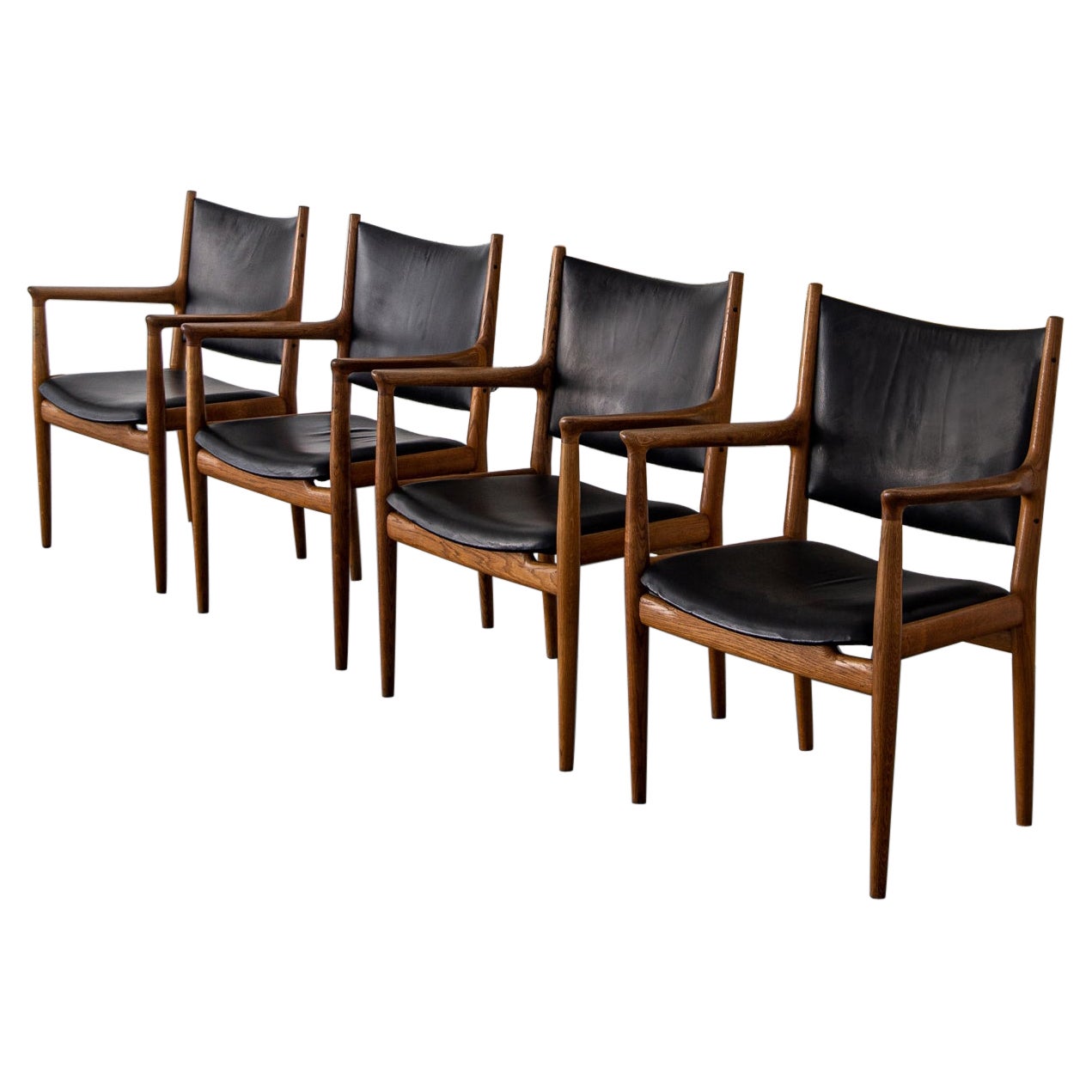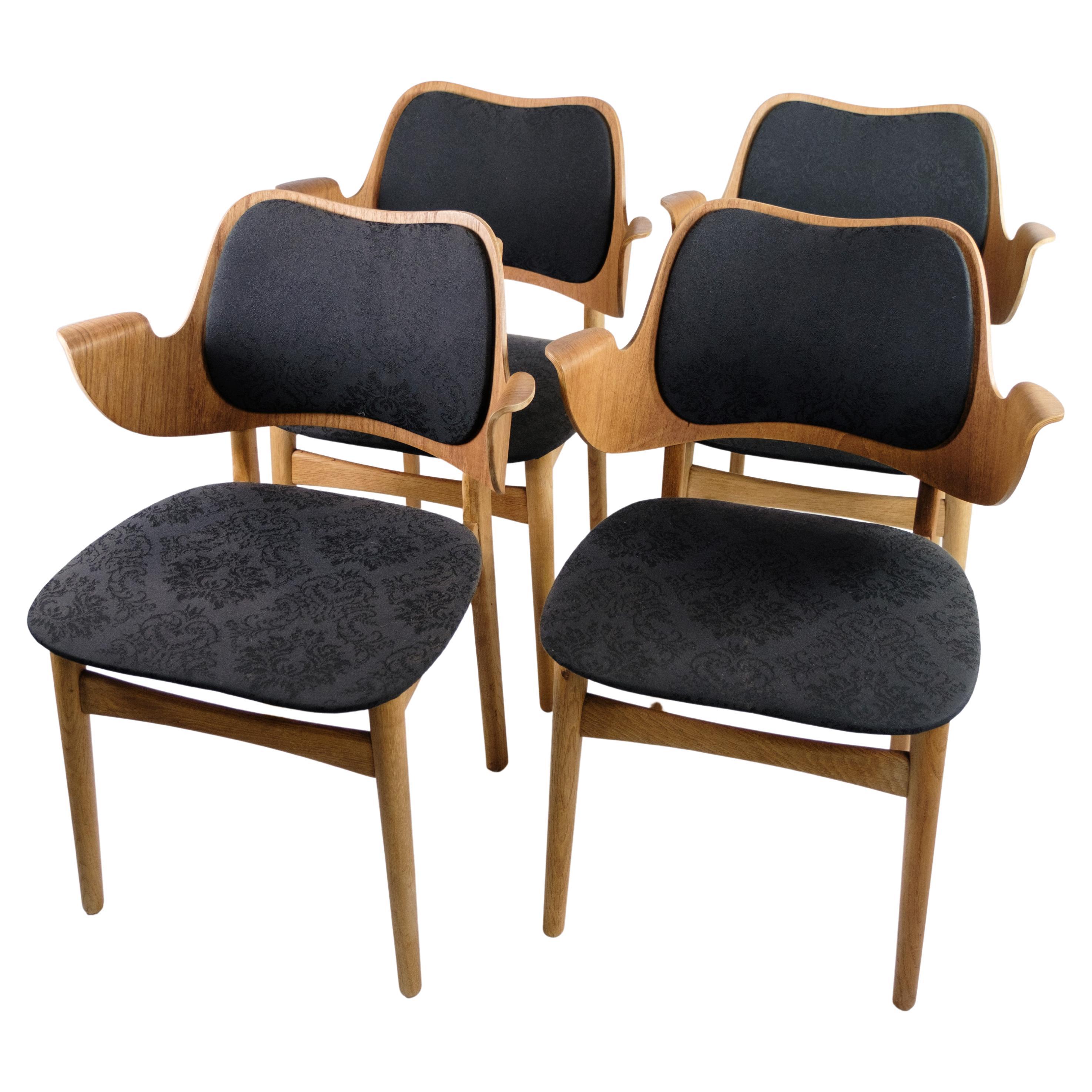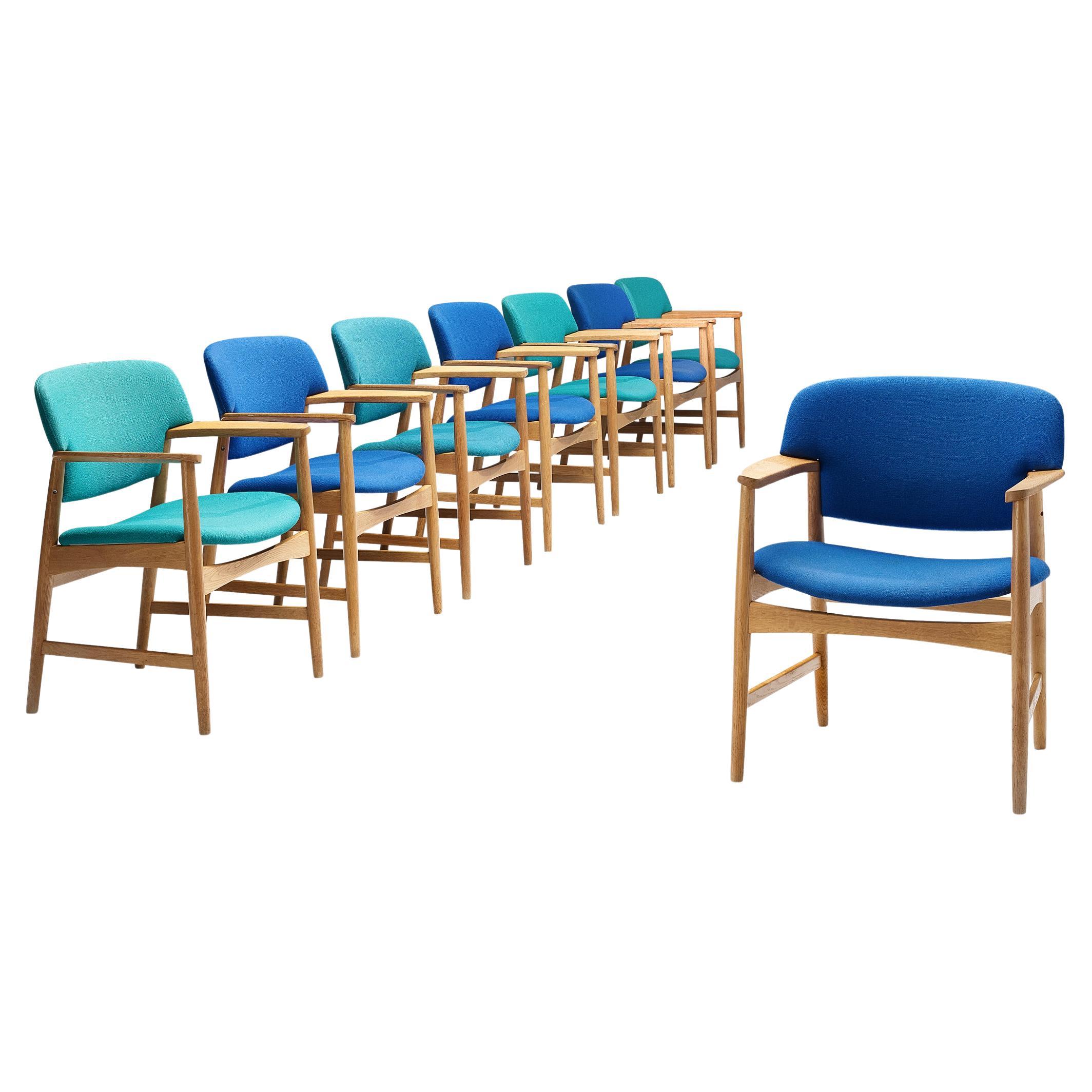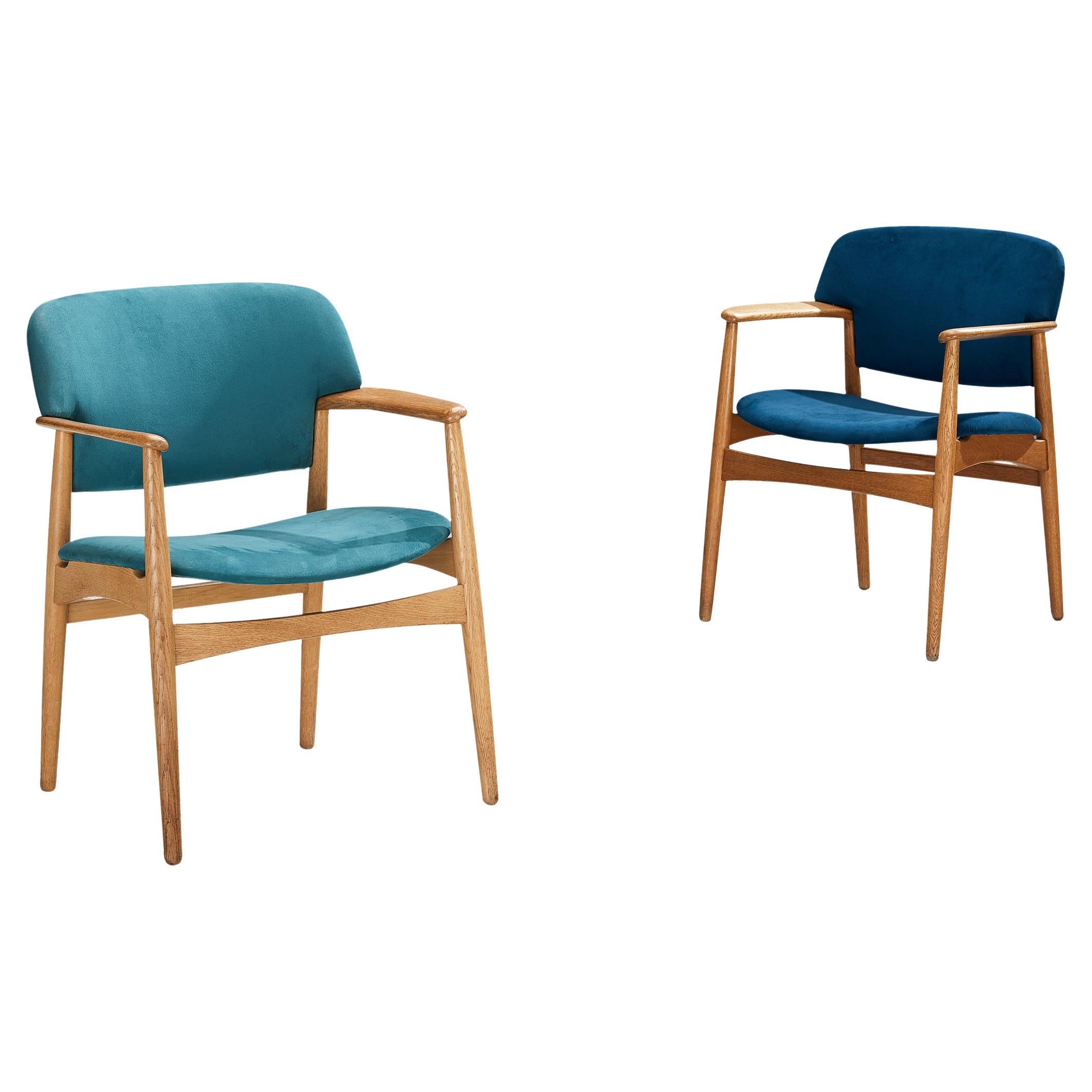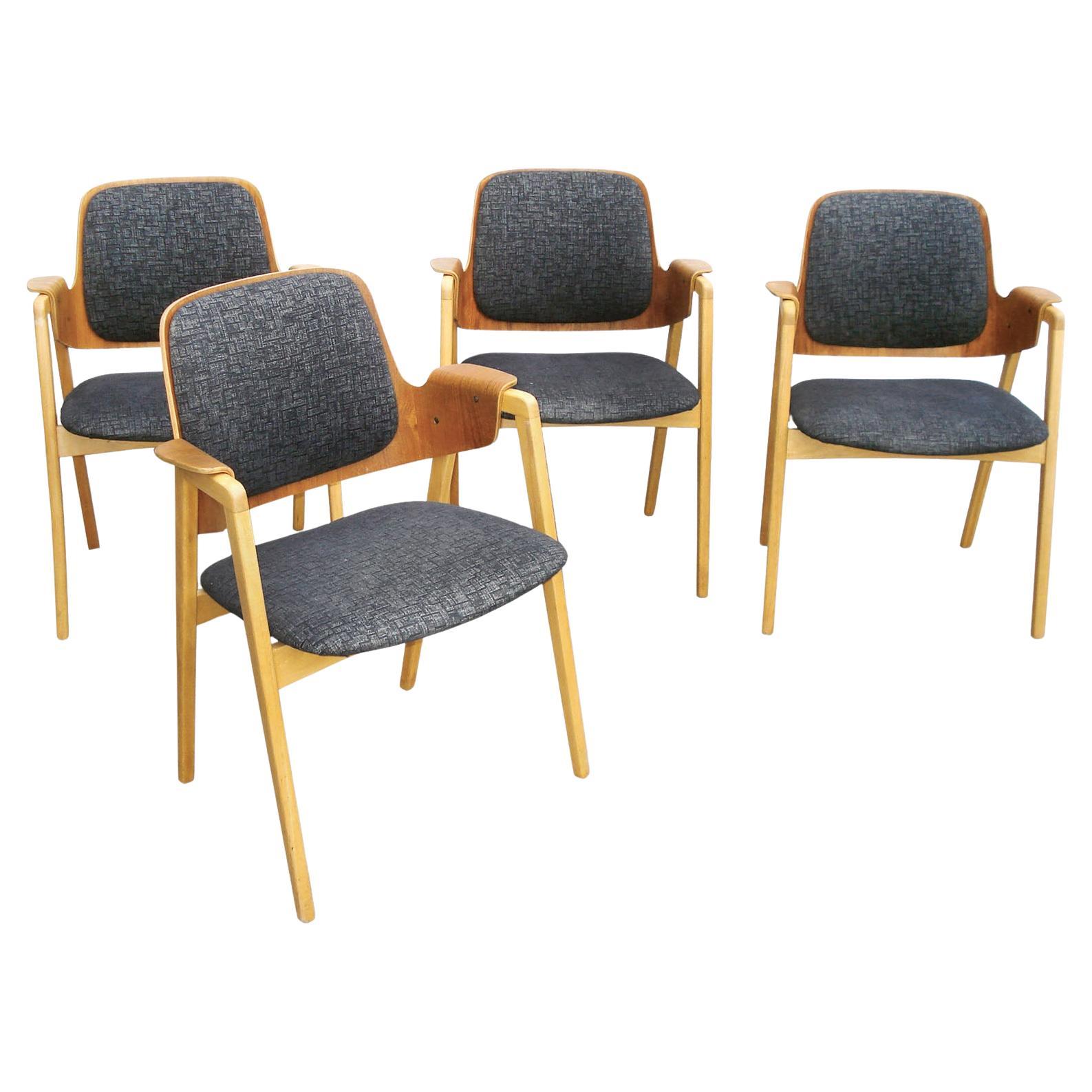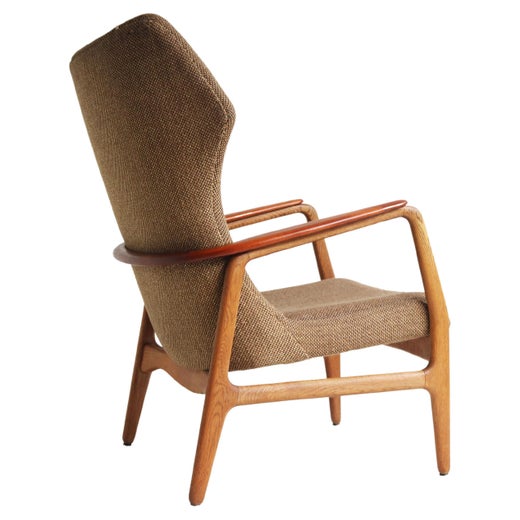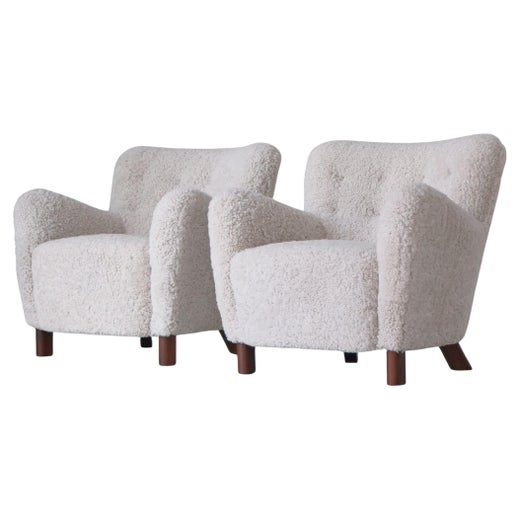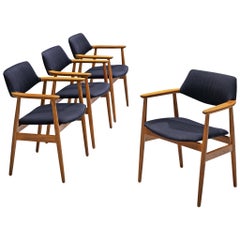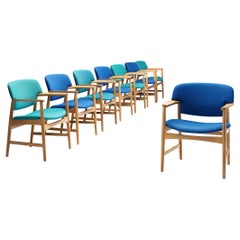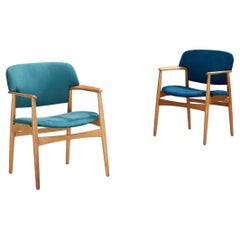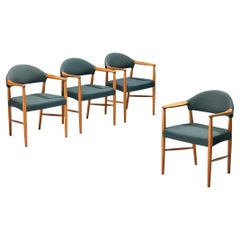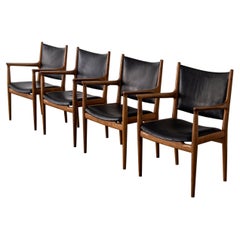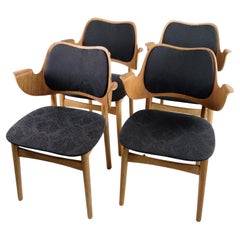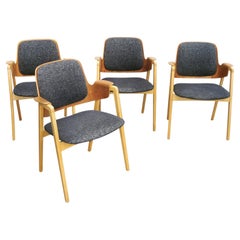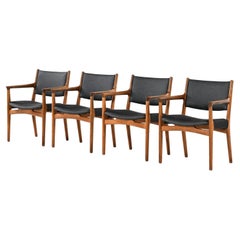Aksel Bender Madsen for Fritz Hansen Set of Four Armchairs in Oak
About the Item
- Creator:Aksel Bender Madsen (Designer),Fritz Hansen (Manufacturer)
- Dimensions:Height: 31.5 in (80 cm)Width: 24.41 in (62 cm)Depth: 21.66 in (55 cm)
- Sold As:Set of 4
- Style:Scandinavian Modern (Of the Period)
- Materials and Techniques:
- Place of Origin:
- Period:
- Date of Manufacture:1955-1960
- Condition:Wear consistent with age and use. Every item Morentz offers is checked by our team of 30 craftspeople in our in-house workshop. Special restoration or reupholstery requests can be done. Check ‘About the item’ or ask our design specialists for detailed information on the condition.
- Seller Location:Waalwijk, NL
- Reference Number:Seller: 450053311stDibs: LU933119883392
Aksel Bender Madsen
Aksel Bender Madsen created a number of classic mid century designs in the late 1940s, 1950s and 1960s, often working jointly with his business partner and friend Ejner Larsen (1917–87). Bender Madsen trained as a cabinetmaker before spending four years studying at the Royal Danish Academy of Fine Arts, graduating in 1940. It was there that he met his lifelong friend Larsen, with whom he would work throughout his career. They designed over 300 pieces of furniture together until Larsen’s death in 1987, often working with cabinetmaker Willy Beck, who produced their designs over a 25-year period. Larsen and Bender Madsen participated annually in the Copenhagen Cabinetmakers’ Guild competitions from 1947, and their work was exhibited at the Triennale di Milano and in the Design in Scandinavia exhibition, which traveled across the US. from 1954 to 1957. Larsen and Bender Madsen’s most famous design, namely the Metropolitan Chair, was developed in 1949 and produced from 1950; its name came from New York’s Metropolitan Museum of Art, where it was shown and acquired for the Arts of Denmark exhibition in 1960–61. Before he began working with Larsen, Bender Madsen worked for Danish icons Kaare Klint and Arne Jacobsen from 1940 to 1943. While designing furniture, he also worked simultaneously as an architect for the Danish Consumers Cooperative Society (1943–50) and as a teacher and principal at the Royal Danish Academy of Fine Arts (1950–54). Bender Madsen was committed to building the Danish design identity and exporting Scandinavian style. He introduced a clear Danish aesthetic to the Dutch brand Bovenkamp in the 1950s and 1960s, who also worked with Arne Vodder. Bender Madsen designs for Bovenkamp feature many models of easy chairs and armchairs, including the low-backed Edith and the high-backed Karen (circa 1950). Together Bender Madsen and Larsen received many awards, including winning the prestigious Copenhagen Cabinetmakers’ Guild Annual Prize in 1956 and 1961. Their furniture is housed in museums around the world, including the aforementioned Met Museum and the Louisiana Museum of Modern Art in Humlebæk, Denmark.
Fritz Hansen
When the Copenhagen-based furniture maker Fritz Hansen opened for business more than 140 years ago, the company — which today styles itself The Republic of Fritz Hansen — adhered to the traditional, time-honored Danish values of craftsmanship in woodworking and joinery. Yet thanks to the postwar innovations of Arne Jacobsen and others, Fritz Hansen would become the country’s leader in Scandinavian modern design using new, forward-looking materials and methods.
Fritz Hansen started his company in 1872, specializing in the manufacture of small furniture parts. In 1915, the firm became the first in Denmark to make chairs using steam-bent wood (a technique most familiar from birch used in the ubiquitous café chairs by Austrian maker Thonet). At the time, Fritz Hansen was best known for seating that featured curved legs and curlicue splats and referenced 18th-century Chippendale designs.
In the next few decades, the company promoted simple, plain chairs with slatted backs and cane or rush seats designed by such proto-modernist masters as Kaare Klint and Søren Hansen. Still, the most aesthetically striking piece Fritz Hansen produced in the first half of the 20th century was arguably the China chair of 1944 by Hans Wegner — and that piece, with its yoke-shaped bentwood back- and armrest, was based on seating manufactured in China during the Ming dynasty. (Wegner was moved by portraits he’d seen of Danish merchants in the Chinese chairs.)
Everything changed in 1952 with Arne Jacobsen’s Ant chair. The collaboration between the architect and Fritz Hansen officially originated in 1934 — that year, Jacobsen created his inaugural piece for the manufacturer, the solid beechwood Bellevue chair for a restaurant commission. The Ant chair, however, was the breakthrough.
With assistance from his then-apprentice Verner Panton, Jacobsen designed the Ant chair for the cafeteria of a Danish healthcare company called Novo Nordisk. The chair was composed of a seat and backrest formed from a single piece of molded plywood attached, in its original iteration, to three tubular metal legs. Its silhouette suggests the shape of the insect’s body, and the lightweight, stackable chair and its biomorphic form became an international hit.
Jacobsen followed with more plywood successes, such as the Grand Prix chair of 1957. The following year he designed the SAS Royal Hotel in Copenhagen and its furnishings, including the Egg chair and the Swan chair. Those two upholstered pieces, with their lush, organic frames made of fiberglass-reinforced polyurethane, have become the two chairs most emblematic of mid-20th-century cool. Moreover, the Egg and Swan led Fritz Hansen to fully embrace new man-made materials, like foam, plastic and steel wire used to realize the avant-garde creations of later generations of designers with whom the firm collaborated, such as Piet Hein, Jørn Utzon (the architect of the Sydney Opera House) and Verner Panton. If the Fritz Hansen of 1872 would not now recognize his company, today’s connoisseurs certainly do.
Find a collection of vintage Fritz Hansen tables, lounge chairs, sofas and other furniture on 1stDibs.
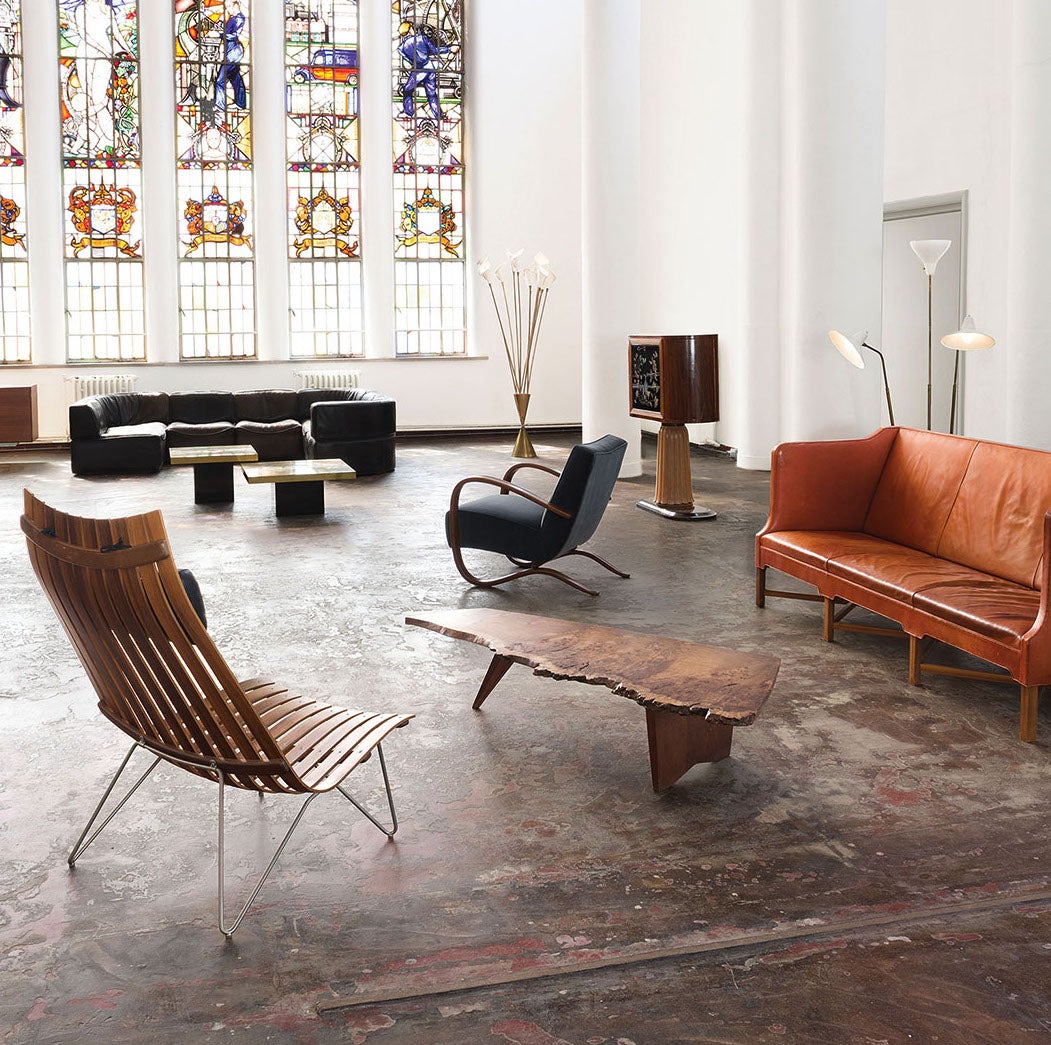
Established in 2006, Morentz has a team of approximately 55 restorers, upholsterers, interior advisers and art historians, making it a gallery, workshop and upholstery studio, all in one. Every day, a carefully selected array of 20th-century furniture arrives from all over the world at the firm’s warehouse, where the team thoroughly examines each piece to determine what, if any, work needs to be done. Whether that means new upholstery or a complete restoration, Morentz's aim is always to honor the designer’s intention while fulfilling the wishes of the client. The team is up to any challenge, from restoring a single piece to its original glory to furnishing a large-scale hotel project.
- ShippingRetrieving quote...Shipping from: Waalwijk, Netherlands
- Return Policy
More From This Seller
View AllVintage 1950s Danish Scandinavian Modern Dining Room Chairs
Fabric, Teak
Vintage 1950s Danish Scandinavian Modern Dining Room Chairs
Fabric, Oak
Vintage 1950s Danish Scandinavian Modern Armchairs
Ultrasuede, Oak
Vintage 1960s Danish Scandinavian Modern Armchairs
Fabric, Teak
Vintage 1960s Danish Scandinavian Modern Dining Room Chairs
Fabric, Oak
Vintage 1950s Danish Scandinavian Modern Armchairs
Oak, Fabric
You May Also Like
Vintage 1950s Danish Mid-Century Modern Armchairs
Leather, Oak
Vintage 1960s Danish Mid-Century Modern Dining Room Chairs
Fabric, Oak, Teak
Vintage 1950s Swedish Mid-Century Modern Armchairs
Upholstery, Beech, Teak
Vintage 1950s Danish Scandinavian Modern Armchairs
Fabric, Oak
Vintage 1960s Danish Scandinavian Modern Armchairs
Oak
Vintage 1960s Danish Mid-Century Modern Dining Room Chairs
Teak
